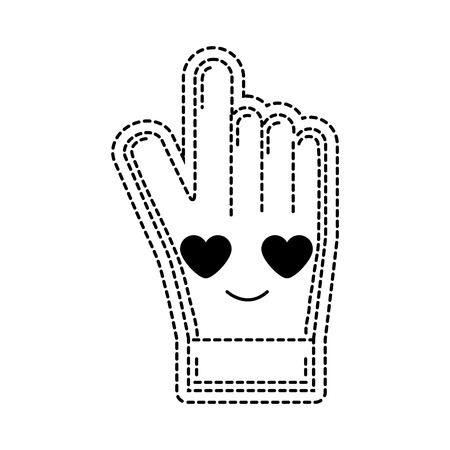Understanding Palmistry in the UK Context
Palmistry, or chiromancy, has long held a curious place within British culture. While often associated with Victorian parlours and fairground tents, the tradition of reading palms stretches much further back in history, weaving through centuries of folklore and everyday life across the UK. At its core, palmistry claims to reveal aspects of personality, fate, and fortune through the study of the lines and shapes found on one’s hands. However, these interpretations have rarely existed in a vacuum; instead, they have been shaped and coloured by prevailing social attitudes — particularly those surrounding gender. Historically, British palmists often applied different meanings to features on men’s and women’s hands, reinforcing existing beliefs about masculinity and femininity. For example, a ‘delicate’ hand was frequently ascribed to women as a sign of gentleness or domesticity, while broader or rougher hands on men were linked to strength and leadership. These gendered readings did not simply reflect palmists observations but mirrored wider societal expectations and stereotypes. As we examine palmistry within its UK context, it becomes clear that understanding its practice requires not only an appreciation for mystical traditions but also a critical awareness of how cultural norms — especially those around gender — have influenced its evolution.
2. Common Gender Stereotypes in British Palmistry
Within the UK, palmistry has long been a subject of fascination, but it is not immune to the influence of cultural stereotypes—particularly those relating to gender. Many traditional British palmists, intentionally or otherwise, have perpetuated myths about differences between men’s and women’s hands, shaping expectations around career ambitions, love lives, and personality traits. Understanding these prevailing myths is essential for anyone seeking a more objective perspective on hand reading.
Career Attitudes in Palm Readings
A common stereotype in British palmistry is the idea that men’s hands reveal ambition, leadership, and rationality, whereas women’s palms are said to indicate nurturing tendencies or suitability for “supportive” roles. These assumptions can subtly reinforce outdated gender roles. In reality, there is no scientific evidence linking hand shape or line patterns with specific career aptitudes based on gender.
Typical Stereotypical Associations
| Aspect | Stereotype for Men | Stereotype for Women |
|---|---|---|
| Career Lines | Assertive, goal-oriented, managerial | Caring professions, administrative support |
| Heart Line Interpretation | Reserved with emotions, logical in relationships | Emotional, romantic, nurturing partner |
| Personality Traits | Confident, independent, strong-willed | Gentle, empathetic, adaptable |
Love and Relationship Myths
Palmists across Britain sometimes claim that women’s palms display more “romantic” features—like deeper heart lines or smoother skin—while men’s hands are interpreted as being more practical or stoic in matters of love. Such readings echo societal beliefs rather than genuine palm characteristics. These differences often serve to reinforce binary views about how each gender should approach relationships.
The Impact on Self-Perception
The persistence of these stereotypes can affect how individuals see themselves after a palm reading. If a woman is told she is “naturally caring” or a man is labelled as “inherently ambitious,” it may colour their self-concept and future decisions. Recognising these myths is the first step towards a more inclusive and accurate practice of palmistry throughout the UK.

3. Popular Myths vs. Reality: Evidence and Expert Insights
When it comes to palmistry, certain gender-based myths have persisted across the UK for generations. Common beliefs include that women’s hands are naturally more intuitive and emotional, while men’s hands supposedly reveal logic and strength. However, comparing these stereotypes with contemporary evidence and expert commentary reveals a far more nuanced picture.
Challenging Traditional Beliefs
One of the most enduring myths in British palmistry is that the length and shape of fingers or lines can definitively distinguish ‘feminine’ versus ‘masculine’ traits. For example, it’s often claimed that women with long, slender fingers are artistic, while men with square palms are practical. Yet, research from UK universities such as UCL and Edinburgh highlights that hand morphology is influenced by genetics and environment rather than gender alone. These studies find no scientific basis for strict gender interpretations in palm readings.
The Academic Perspective
Academic research into palmistry often critiques its lack of empirical support, especially regarding gendered assumptions. A review published by the British Psychological Society points out that personality traits like empathy or assertiveness cannot be reliably linked to hand features, regardless of sex. Instead, such attributes are shaped by a complex interplay of social, cultural, and psychological factors—many of which transcend simple male-female divisions.
UK Practitioners Weigh In
Contemporary palmists throughout the UK increasingly reject rigid gender binaries in their practice. Experienced readers from London to Glasgow report focusing more on individual life experiences than on outdated gender scripts. As one practitioner in Manchester explained: “The lines tell a story unique to each person—gender stereotypes only limit what we can see.” This approach aligns with a broader shift towards inclusivity within the holistic community across Britain.
Ultimately, while gender myths in palmistry remain popular in some circles, mounting evidence and modern expert opinion suggest it’s time to move beyond them. By questioning inherited assumptions, both practitioners and clients in the UK can foster a deeper and more authentic engagement with this traditional art.
4. Cultural Influences Shaping Gender Readings
Palmistry, like many other forms of divination, does not exist in a vacuum. In the UK, the way palm readings are interpreted has been deeply coloured by cultural currents, societal expectations, and the language we use every day. This section explores how British norms, media representation, and linguistic habits contribute to the persistence of gender myths within palmistry practices.
Societal Norms: Tradition Meets Modernity
British society carries a rich history of tradition, with expectations around gender roles often subtly embedded in everyday life. These conventions frequently seep into palmistry readings. For example, traits such as leadership or emotionality may be ascribed differently based on whether the seeker is male or female. While modern Britain strives for equality, some remnants of Victorian-era ideals about ‘masculine’ and ‘feminine’ characteristics still linger in popular understanding.
Media Influence: Reinforcing Stereotypes
The portrayal of palmists and their clients in British television, magazines, and online platforms often reinforces gender stereotypes. Media stories tend to frame women as seeking reassurance about relationships and family, while men are portrayed as looking for guidance on career or financial matters. Such representations shape public perception and can influence both how readings are delivered and received.
Table 1: Common Gender Stereotypes in British Palmistry Media
| Gender | Stereotypical Reading Focus | Example (UK Media) |
|---|---|---|
| Women | Love & Relationships | “Will I find Mr Right?” in lifestyle magazines |
| Men | Career & Ambition | “Is a promotion coming?” in TV interviews |
| Non-binary/Other | Largely ignored or misrepresented | Lack of representation in mainstream media coverage |
The Role of Language in Perpetuating Myths
The English language itself—especially as spoken across different parts of the UK—carries idioms and assumptions that reinforce gendered thinking. Phrases like “a strong handshake means a determined man” or “delicate lines suit a gentle woman” can unconsciously bias both the palmist’s interpretation and the client’s expectations. Regional dialects sometimes add further nuance; for example, certain words or expressions used in Scotland versus southern England might subtly shift the focus of a reading.
Challenging These Influences
Awareness is growing among contemporary British palmists about these ingrained cultural influences. Some practitioners now actively work to neutralise gendered assumptions by focusing on individual personality traits rather than stereotypes. By recognising how societal norms, media portrayals, and language choices affect their practice, they hope to offer more inclusive and accurate readings for everyone across the UK.
5. Contemporary Perspectives: Challenging the Stereotypes
Across the UK, a new generation of palmists and curious individuals are actively breaking away from the gendered assumptions that have historically coloured palmistry. These modern practitioners, often well-versed in both tradition and critical thinking, are not just questioning old narratives—they are rewriting them. Take for example Olivia Hartley, a London-based palmist who insists on letting each client’s hands speak for themselves, without imposing conventional gender expectations. Olivia regularly hosts community workshops across Manchester and Bristol, where she highlights how lines and shapes tell unique stories—regardless of whether the hand belongs to a man or a woman.
Another notable voice is Rohan Singh from Birmingham, whose practice has gained attention for its inclusive approach. Rohan openly discusses the diversity of his clients’ backgrounds and identities, and he challenges visitors to consider how cultural and personal contexts influence interpretations far more than simple gender binaries ever could. He also collaborates with local LGBTQ+ support groups, underlining that palmistry can be a tool for self-affirmation rather than a box-ticking exercise based on outdated stereotypes.
In Scotland, Eilidh MacLeod is known for her engineering background and analytical method. She documents her readings as case studies, treating each session like an open-ended experiment. Eilidh’s engineering mindset means she approaches every palm with curiosity rather than assumption, encouraging others in the field to do the same. Her work is often shared at Edinburgh’s alternative wellness fairs, where attendees find her data-driven yet empathetic approach refreshingly modern.
The common thread among these contemporary UK palmists is their refusal to accept traditional gender myths as gospel. They advocate for a more nuanced perspective: one that appreciates the complexity of human experience reflected in our hands. By sharing stories, running workshops, and engaging directly with diverse communities, they demonstrate that palmistry can evolve alongside society—embracing inclusion, critical thought, and genuine human connection.
6. Moving Forward: Toward Inclusive and Respectful Palmistry
In the ever-evolving landscape of British society, palmistry must adapt to embrace inclusivity and challenge outdated gender stereotypes. Both readers and seekers have a vital role to play in fostering respectful and open-minded practices that reflect modern UK values.
For Palm Readers: Practical Steps
- Reflect on Language: Avoid gendered assumptions such as “female intuition” or “male ambition.” Instead, focus on individual strengths and unique qualities, using neutral language that resonates with everyone, regardless of gender identity.
- Continuous Learning: Stay informed about evolving discussions around gender. Attend workshops or engage with diverse communities across the UK to understand how cultural contexts shape identity and expectations.
- Challenge Stereotypes: If a traditional interpretation feels restrictive or biased, re-examine its roots. Prioritise evidence-based insights over inherited myths, and be open to new interpretations shaped by lived experiences.
For Seekers: Empowering Your Experience
- Speak Up: If a reading feels uncomfortable or relies on stereotypes, voice your concerns respectfully. Open dialogue helps promote better understanding between you and your reader.
- Seek Diversity: Explore different palmists with varied backgrounds and approaches. The UK is home to a rich tapestry of practitioners who may offer perspectives beyond binary traditions.
Cultivating Mutual Respect
Palmistry thrives in an environment of trust and mutual respect. By acknowledging individuality rather than defaulting to gendered assumptions, both readers and clients contribute to a more inclusive experience. Encourage feedback after readings—this can help both parties grow in awareness and sensitivity.
A Call for Mindful Practice
The future of palmistry in the UK lies in conscious efforts to debunk gender myths and champion personal narratives. Let us move forward together, treating every hand as unique—reflecting not just lines on the skin but also stories that transcend stereotypes. In doing so, palmistry can remain a meaningful practice rooted in empathy, equality, and genuine curiosity about each individual’s journey.


